On a former guided desert walk in Namibia, we enjoyed a very informative talk with Boesman, a local guide whose name translates to ‘bushman’ in Afrikaans. During the walk, he told us a series of interesting facts about scorpions.
He covered a variety of topics, including a breakdown of the infamous scorpion sting, how to recognize the most venomous scorpion types, how to catch them, and so on.
If you ever travel to the Sossusvlei or Deadvlei areas in Namibia, don’t miss out on Boesman’s guided walks. You can find them by searching for “Sossus-on-foot“, or get hold of them using the contact details in the image below.
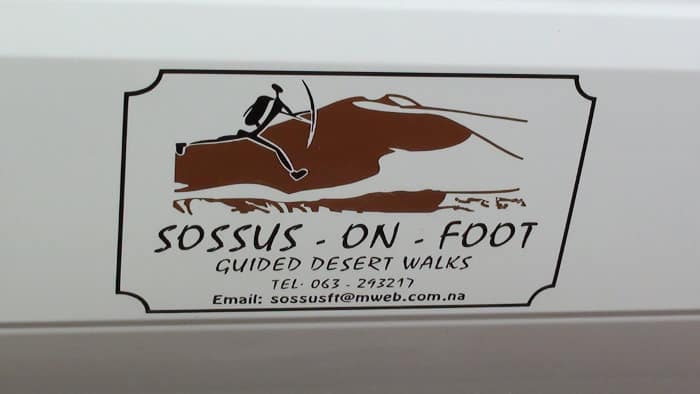
Do Scorpions Bite?
Nope! The first and most important thing you need to know before we get started is that a scorpion does not bite; it stings! 😉
Many people refer to ‘scorpion bites’ when speaking about scorpion stings, which can lead to some confusion. So, with that out of the way and cleared up, let’s get cracking!
9 Interesting Scorpion Facts
Boesman was an incredibly knowledgeable guide, and conveyed the information in a really captivating way. Check out this video of him, in the desert during the walk, offering up a platter of fascinating, scorpion-based knowledge.
Here’s a detailed breakdown of the interesting scorpion facts and information that Boesman discussed during the walk.
1. Scorpions are shy
Scorpion stings are almost always accidental. As it turns out, they’re incredibly shy creatures and are very sensitive to vibrations. They even shy away from the vibrations caused by human footsteps.
Boesman proclaimed this confidently as he stood in the middle of prime scorpion territory entirely barefoot. Scorpions aren’t interested in stinging humans, it’s simply their natural reaction if you come into contact with them in the wrong way at the wrong time.
2. Not all scorpions are venomous

It’s a common misconception that all scorpions are highly venomous and their stings dangerous. In truth, many scorpions aren’t venomous, and fatal encounters are highly unlikely. Out of the 1,500 species of scorpion on Earth, an estimated 30 of them produce venom that is potent enough to be fatal.
In most cases, scorpion stings will heal without treatment.
3. One should pick up stones with caution
In areas that are home to scorpions, one needs to be cautious when picking up or moving a stone. Scorpions in Namibia and around the world spend a lot of their time hiding underneath them.
Namibians know to roll a stone toward them, allowing the snake or scorpion beneath it to scurry away in the other direction. Tourists often don’t know this and can find themselves in a bit of trouble.
4. Scorpions are most active when it’s windy
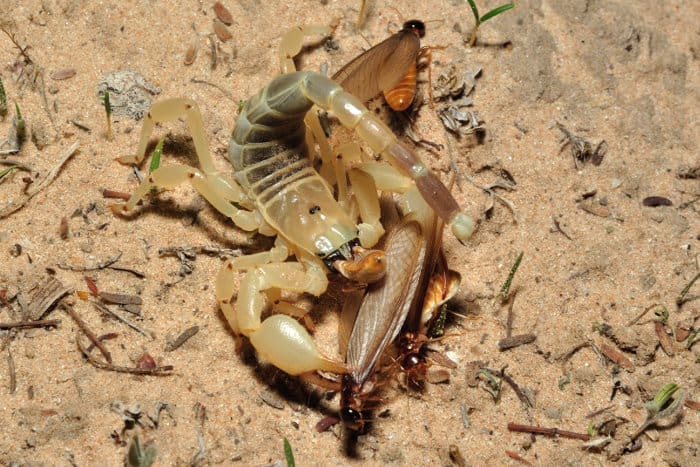
If you venture out into the Namib Desert or the Kalahari on a windy day, you’re a lot more likely to run into scorpions than on a windless day. In the absence of wind, insects (aka scorpion food) fly around rather than spending time on the ground.
When the wind is blowing, the insects cannot fly, finding themselves grounded. So the scorpions take the opportunity to come out and catch them.
5. It’s best to stay calm in the presence of a scorpion
If you find yourself in the presence of a scorpion, don’t make any abrupt movements. Moving suddenly will put you at a higher risk of them stinging you.
Boesman illustrated the point by suggesting that if a scorpion, in Namibia or elsewhere, runs over your foot, you’ll be best off not moving. Allow it to scurry on its way and it will leave you without a sting. If you move suddenly, you might not be so lucky.
6. Scorpion holes are long and elongated
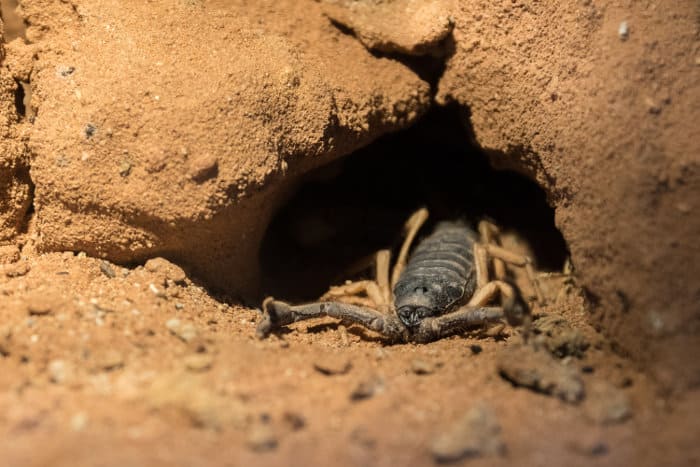
If you come across a circular hole in one of Namibia’s deserts, don’t panic. It’s far more likely to belong to a mouse than a scorpion. Scorpions dig with their pincers, so they form an elongated hole when they burrow, rather than a circular one.
7. A scorpion can’t sting things that are below it
Surprisingly, you can safely hold a scorpion in your hand. The animals are unable to sting things that are below them, due to the upward curving nature of their tails. If you point your finger at it, however, the animal is likely to go for the strike.
Some of you may be wondering how to catch a scorpion in the first place. For those adventurous readers, the curved tail presents a catching technique that can avoid any nasty stings. If you dig from underneath the scorpion’s hole or hiding place, it won’t be able to sting you.
8. The potency of scorpion stings depends on many factors
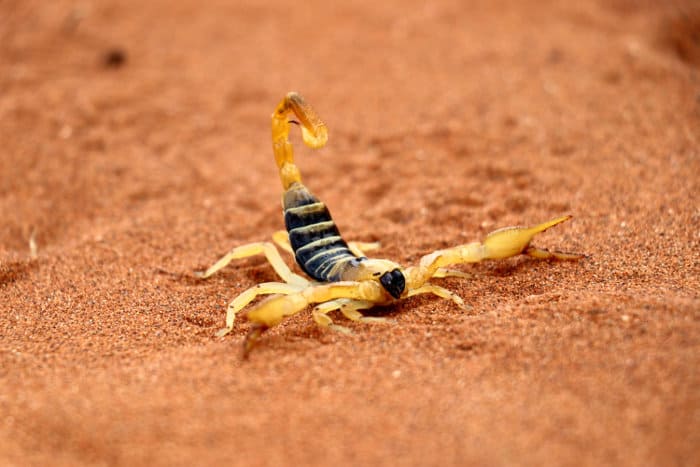
There are a variety of factors that contribute to how venomous a scorpion is.
Adults have stronger venom than younger scorpions.
Male scorpions are more venomous than females.
Sexually active males have a more potent sting than those that aren’t.
And scorpions that haven’t eaten for long are most venomous. So a scorpion that has just had a meal has weaker venom than its hungry cousins.
You’d best hope you don’t come across an adult, male, sexually active scorpion who’s skipped a few meals! But all jokes aside, this is a highly unlikely encounter. 🙂
9. A big tail is a sign of strong venom
Physical scorpion characteristics can also be an indicator of their venom potency.
Generally speaking, you can tell how venomous a scorpion is by the size of its tail versus the size of its pincers. Namibian scorpions with small pincers and a big tail have very potent venom. As Boesman put it, ‘the power is in the tail’.
Conversely, scorpions with big pincers and a thin tail have relatively weaker venom – the power is in the pincers.
So if a scorpion with a small tail and large pincers stings you, chances are you’ll be just fine. If a large-tailed scorpion stings you, it’s best to get to a doctor sooner rather than later. But if you’re in doubt, don’t take any risks. Visiting a doctor is always the safest move.
Facts About Scorpions in Namibia – Wrapping Up
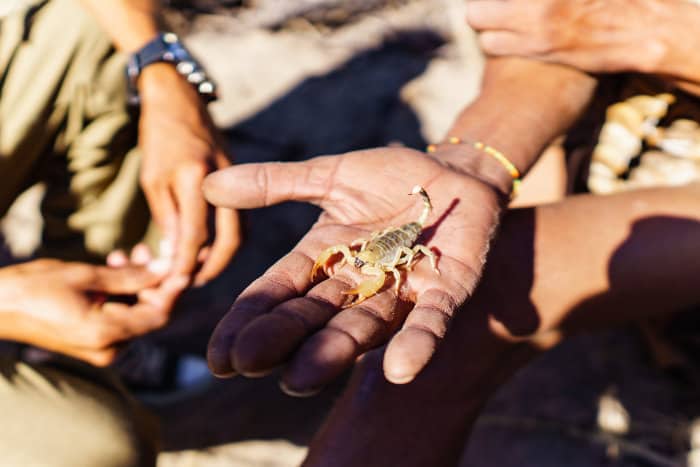
Scorpions are misunderstood, weird and wonderful creatures. They mean no harm to humans, preferring instead to keep to themselves. And on the occasions when they do sting humans, the sting is unlikely to be fatal.
That isn’t to undermine the seriousness of a severe scorpion sting. But with a bit of insider knowledge and a few precautions, it’s totally possible for humans and scorpions to co-exist in perfect, peaceful harmony. Just ask Namibians like Boesman, they’ve got it down to a fine art!
Hopefully this scorpion information guide has helped shed a bit of light on these little animals.
Looking for an African adventure? Click here to embark on a tailor-made wildlife safari experience.
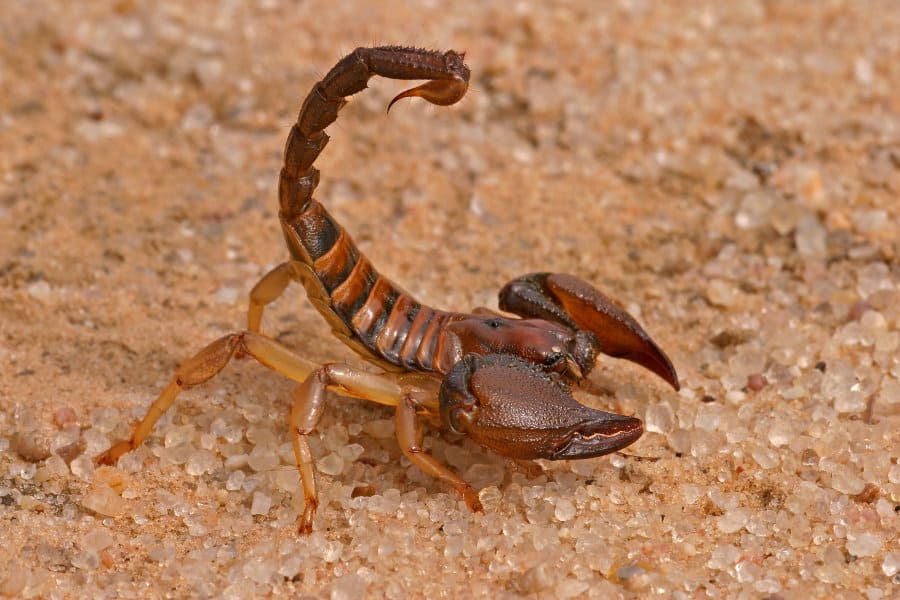



Thank you for a very simple explanation on how to identify the scorpions – I am putting it in my local newsletter in the hope our locals and visitors will now understand the differences. I live in a small seaside village, Jacobsbaai, on the Cape West coast where we have hundreds of scorpions.
Regards, Bev Gregory
Glad you found the explanation helpful, Bev! 🙂